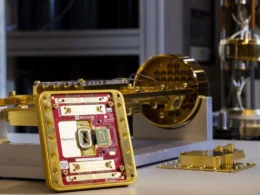Forget smart devices; HomeLM sets out to make your entire home an intelligent system that comprehensively observes, understands, and interacts with its inhabitants. The idea of Ambient AI (Ambient Intelligence) aims to create an environment that intuitively adapts to the needs of its residents. However, current smart home ecosystems remain fragmented, with devices designed to perform singular functions without a unified understanding of their occupants.
The proposal for HomeLM emerges as a revolutionary foundation model intended to unite varied sensor data from different devices into a cohesive and interpretable narrative regarding the activities within the home. More than just automation, this model strives for a system that intuitively gathers context and interacts naturally with its occupants.
Beyond Simple Automation
At its core, Ambient AI seeks to empower homes to recognize and respond to the occupants’ needs without explicit commands. This objective is significantly enabled by ambient sensing, which continuously collects data about the environment without user input. Techniques such as Wi-Fi reflections that signal movement, mmWave radar to identify gestures, and Bluetooth Low Energy (BLE) signals from wearable devices are crucial.
Despite the existence of various algorithms designed for specific detections (e.g., presence and distance measurement), a unified model that fuses these diverse signals into a meaningful context remains absent. HomeLM aims to bridge this gap by interpreting disparate sensor data and translating them into higher-level human activities and intentions.
Lessons from Other Foundation Models
Previous foundation models have achieved similar integration across domains. For instance, OpenAI’s CLIP combined vision and language by learning from a vast dataset of images and captions. This model could successfully classify objects it had never encountered through its contrastive learning approach. Similarly, Google’s SensorLM aligned physiological data with textual descriptions, demonstrating robust capabilities for recognizing activities and summarizing data.
The critical lesson from these advancements is that by aligning raw signals with language, a model can discern implicit relationships, enhancing its generalizability across different tasks.
Unifying Sensor Data
Smart homes generate copious data from various sensor types. Major sensor modalities include:
- BLE and UWB: Detect proximity and localize users.
- Wi-Fi CSI: Track user movement and presence.
- Ultrasound and acoustics: Facilitate high-confidence interactions based on proximity.
- mmWave radar: Recognize precise gestures, postures, and vital signs.
- Environmental sensors: Assess conditions like temperature and humidity.
- Microphone arrays: Capture audio signals.
- Cameras: Track visuals, manage object identification, and detect motion.
In combination, these sensors paint a detailed picture of human presence and activity within a space. HomeLM would unify these streams with natural language, creating a cohesive understanding of household dynamics.
Training HomeLM
Given the limited availability of annotated sensor data, HomeLM can be trained using a hierarchical captioning strategy that identifies statistical trends, structural patterns, and semantic meanings in sensor data. This multi-layered approach enables the model to produce meaningful outputs and high-level descriptions of human activities.
Capabilities of HomeLM
Once trained, HomeLM can provide adaptive and intuitive features:
- Zero-shot Recognition: Recognizing new activities without prior training.
- Few-shot Adaptation: Quickly adapting to critical events with minimal labeled examples.
- Natural Language Interaction: Users can query their home’s activities using everyday language, making interaction seamless.
- Sensor Fusion: Combining insights from various sensors to create a richer understanding of home dynamics.
- Advanced Reasoning: Utilizing multimodal learning to enhance relationships between data points, allowing for complex inferences.
Real-World Application
Envision a scenario where you arrive home, and your smart home system recognizes your presence through various signals. Your devices communicate with each other to understand your actions, producing a cohesive narrative of your evening: “The resident returned home at 6:02 pm, watched TV for 1 hour and 32 minutes, then went to bed.”
HomeLM’s ability to synthesize this data into a coherent context stands in contrast to traditional machine learning models that merely output probabilities or classifications.
Research Challenges Ahead
However, developing HomeLM is not without challenges:
- Data Availability: Unlike extensive image-text datasets, significant annotated sensor data is scarce.
- Diversity of Sensors: A flexible architecture is needed to handle the variety of sensors and their unique characteristics.
- Generalization: HomeLM must be adaptable to different home configurations and contexts.
- Privacy Concerns: Ensuring the model respects user privacy is paramount.
- Efficiency: Implementing these models on edge devices for effective usability remains a challenge.
The Future of Home Intelligence
With the promise of AI in smart homes still largely unfulfilled, there is great potential in developing a unified model such as HomeLM that integrates various sensors with natural language understanding. Achieving this could fundamentally shift our experience of home technology, transforming our living environments into genuinely intelligent spaces that preemptively cater to our needs and preferences. The journey presents significant challenges, but the rewards of smart environments that understand and streamline daily life would be transformative.











